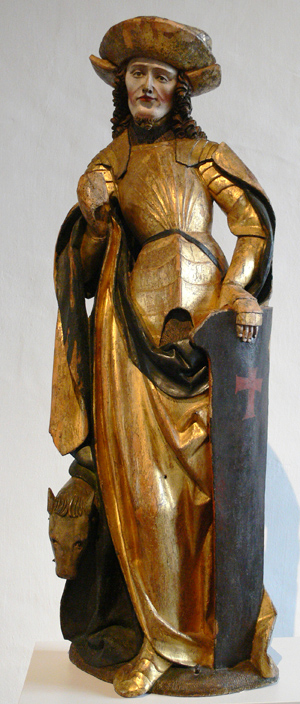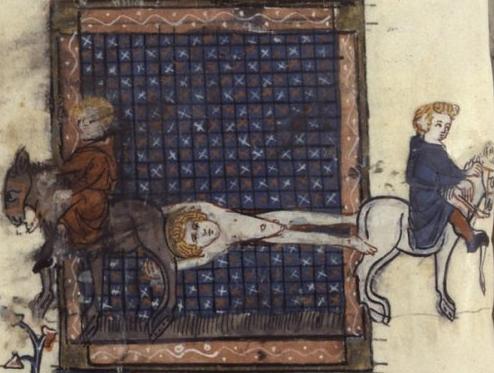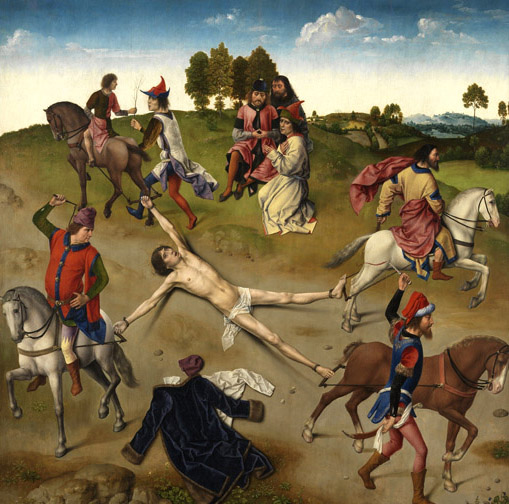However, in succeeding centuries there developed an alternate story in which Hippolytus was among the soldiers charged with guarding St. Lawrence. In this legend, he was baptized by the saint and in turn had his entire family baptized. He was the one who preserved Lawrence's body after his death, and as punishment he was tortured and then killed by having his legs tied to wild horses. The first part of this story is usually told as part of Lawrence's passion, and the second as a separate passion under Hippolytus' own name.1
The legends are ambiguous about precisely how the saint died. In many, the horses drag him over the countryside so that his flesh is torn by thistles and stones. But as early as the Old Gothic Missal (late 7th or early 8th century) it is asserted both that his flesh was torn and that the horses pulled him apart (Acta Sanctorum, August vol. 3, 6). This is hard to visualize. To drag the man, they would have to be going in the same direction; to pull him apart, they would have to be going in different directions.
Artists seem to prefer the second alternative. A manuscript illumination from the 14th century has two horses pulling the saint in opposite directions (third image at right). The Golden Legend also specifies two horses, as does the South English Legendary. The number grows to four in Derek Bouts's 15th-century painting (bottom image at right), where the horses are pulling Hippolytus' body apart, not dragging him anywhere.
In the south aisle of St. Mark's, Venice, Hippolytus is pictured as a young courtier, beardless, wearing red shoes, and holding a hand cross, the conventional Byzantine emblem of martyrdom. In the West, medieval and later portraits present him as a soldier – either in Roman military garb or dressed as a knight of the artist's own era, as in the first picture at right. The portraits often include a horse as the saint's attribute.
Prepared in 2014 by Richard Stracke, Emeritus Professor of English, Augusta University

Early 16th-century statue of St. Hippolytus (See the description page for discussion and full-resolution image)
Statue possibly of St. Hippolytus from the 4th or 5th century (See the description page)

Manuscript illuustration, 14th century (See the description page)

Center panel, Hippolytus Altarpiece, Dierek Bouts (See the description page for full altarpiece and discussion.)
ATTRIBUTES
- Horse
- Roman or medieval military garb
DATES
- Feast day: August 13
BIOGRAPHY
- Golden Legend #118 (html or pdf). Also see #117, St. Lawrence, html or pdf.
- South English Legendary, 480-83.
- Roman Breviary: English translation, III, 819; Latin original, 987-88
- A brief passion from the Martyrologium Adonis is in Acta Sanctorum August vol. 3, 13-14.
- Prudentius, Peristephanon, Carmen XI.
NOTES
1 Golden Legend #117 (Lawrence) and 118 (Hippolytus). Acta Sanctorum, August vol. 3, 13-14. South English Legendary 480-83 (Hippolytus) and 340-45 (Lawrence). See Butler, III, 315, regarding the parallels between the death of this Hippolytus and that of the Hippolytus of Greek myth.